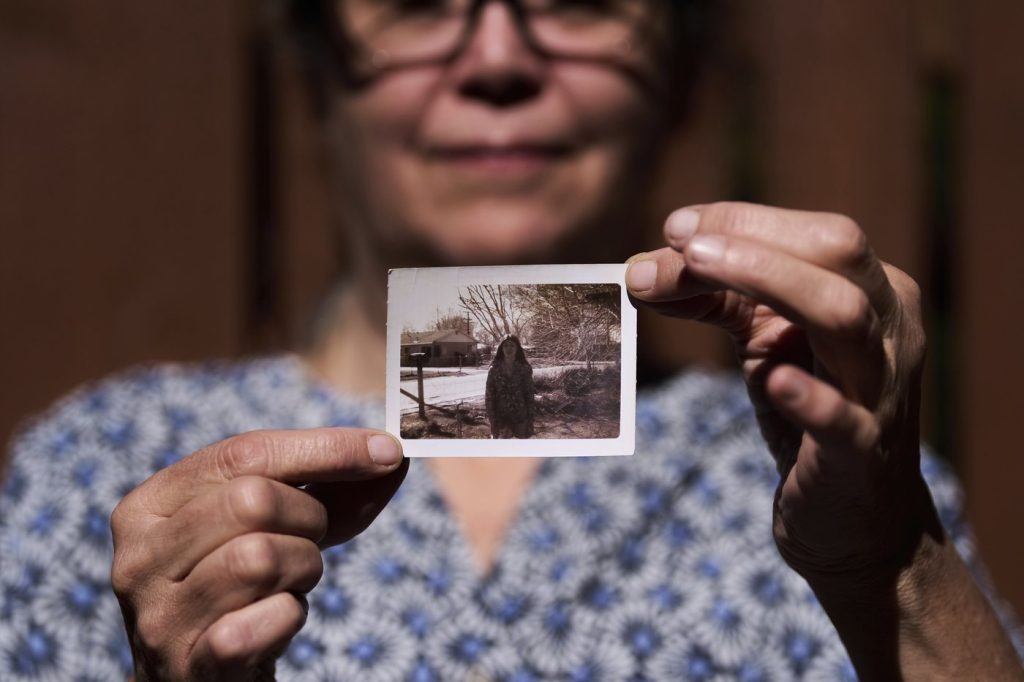World
DNA Breakthrough Identifies Woman Missing Since 1974 in Oregon

A significant breakthrough in a decades-old missing persons case has occurred in Oregon, where the remains of a woman, found in 1976, have been identified as belonging to Marion Vinetta Nagle McWhorter. This identification, confirmed through DNA analysis, provides closure to her sister, Valerie Nagle, who spent nearly half a century searching for answers.
Marion McWhorter was last seen in October 1974 at a shopping mall in Tigard, a suburb of Portland. At that time, she was just 21 years old, with plans to travel from California to Seattle and eventually Alaska. Her sister, Nagle, was only 11 when McWhorter disappeared, leaving a lasting impact on the family.
The remains of McWhorter were discovered near a mountain creek in Oregon’s Central Cascades. For years, the case remained cold, with no leads or significant developments. Nagle embarked on a personal quest for answers, utilizing online databases of unidentified persons and even submitting her DNA to a genealogy website in hopes of finding a match.
In June 2023, Oregon authorities contacted Nagle unexpectedly to discuss a comparison of her DNA with evidence from the cold case known as “Swamp Mountain Jane Doe.” This contact led to a pivotal moment in the investigation, as the DNA from Nagle matched the remains identified from 1976, confirming the identity of her sister.
“I was really glad that they found me through DNA,” Nagle stated, expressing her surprise at the call from authorities.
The background surrounding McWhorter’s disappearance is deeply intertwined with issues of public safety and the high rates of missing Indigenous women. Nagle, who identifies as Alaska Native from the Ahtna Athabascan people, noted the challenges that Indigenous families face in such cases. “There were efforts to search, but it was limited,” she reflected on her family’s attempts to find McWhorter, acknowledging the lack of resources available at the time.
Investigators had previously submitted bone samples from McWhorter’s remains to the University of North Texas Center for Human Identification in 2010, generating a profile for the national missing persons database, NamUs. Further efforts in 2020 included DNA extraction that created a unique genetic marker. Yet, the breakthrough came in April 2023, when a distant relative uploaded their genetic profile to FamilyTreeDNA, enabling genealogists to connect Nagle to her sister’s case.
State Forensic Anthropologist Hailey Collord-Stalder emphasized the emotional toll of unresolved cases, stating, “This case was cold for 49 years. That means that family members lived and died without ever knowing what happened to their missing loved one.” She added that McWhorter “likely did not go missing voluntarily,” suggesting the need for further investigation into the circumstances surrounding her death.
As the Linn County Sheriff’s Office continues to explore the details surrounding McWhorter’s death, Nagle has found a critical piece of her family’s history. “I never forgot about her,” she remarked, reflecting the enduring impact of her sister’s disappearance on her life.
The identification of Marion Vinetta Nagle McWhorter marks a significant milestone in a case that has haunted a family for decades, illustrating the power of modern technology in solving historical mysteries and providing much-needed closure.
-

 Science3 months ago
Science3 months agoToyoake City Proposes Daily Two-Hour Smartphone Use Limit
-

 Top Stories3 months ago
Top Stories3 months agoPedestrian Fatally Injured in Esquimalt Collision on August 14
-

 Health3 months ago
Health3 months agoB.C. Review Reveals Urgent Need for Rare-Disease Drug Reforms
-

 Technology3 months ago
Technology3 months agoDark Adventure Game “Bye Sweet Carole” Set for October Release
-

 World3 months ago
World3 months agoJimmy Lai’s Defense Challenges Charges Under National Security Law
-

 Lifestyle3 months ago
Lifestyle3 months agoVictoria’s Pop-Up Shop Shines Light on B.C.’s Wolf Cull
-

 Technology3 months ago
Technology3 months agoKonami Revives Iconic Metal Gear Solid Delta Ahead of Release
-

 Technology3 months ago
Technology3 months agoApple Expands Self-Service Repair Program to Canada
-

 Technology3 months ago
Technology3 months agoSnapmaker U1 Color 3D Printer Redefines Speed and Sustainability
-

 Technology3 months ago
Technology3 months agoAION Folding Knife: Redefining EDC Design with Premium Materials
-

 Business3 months ago
Business3 months agoGordon Murray Automotive Unveils S1 LM and Le Mans GTR at Monterey
-

 Technology3 months ago
Technology3 months agoSolve Today’s Wordle Challenge: Hints and Answer for August 19









